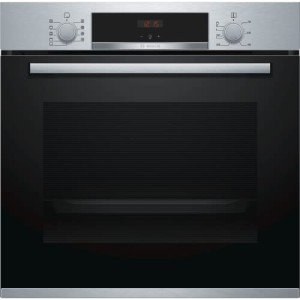The Rise of Built-In Ovens: A Seamless Approach to Modern Cooking
In modern cooking areas, where style aesthetic appeals blend seamlessly with functionality, one appliance sticks out as a real game changer: the built-in oven. As house owners and chefs alike continue to seek innovative options that enhance their cooking experience, built-in ovens have actually ended up being progressively popular. integrated ovens uk explores the benefits, factors to consider, and trends surrounding built-in ovens, highlighting why they are an essential feature in modern-day cooking spaces.
What is a Built-In Oven?
A built-in oven is a kitchen appliance designed to be integrated into the kitchen cabinetry of a kitchen area instead of standing alone. Unlike traditional freestanding ovens, which can be moved and positioned anywhere, built-in ovens can be found in various designs and sizes to fit specifically within designated spaces. Readily available in single or double configurations, these ovens use a streamlined appearance that complements modern-day kitchen styles.
Advantages of Built-In Ovens
1. Space-Saving Design
Among the most attractive benefits of built-in ovens is their space-saving design. By incorporating the oven into cabinetry, you can release up important counter and floor area. This is particularly advantageous in smaller sized cooking areas, where maximizing room is important. Built-in ovens can be installed at eye level, making them more available and decreasing the requirement to bend down.
2. Visual Appeal
Built-in ovens add to a sleek and cohesive kitchen design. Readily available in different finishes-- such as stainless steel, black, white, and custom kitchen cabinetry-- they can mix perfectly into the general decoration. This visual appeal enhances the cooking area's visual consistency and elevates the area, developing a modern-day and sophisticated atmosphere.
3. Enhanced Functionality
Lots of built-in ovens come geared up with innovative cooking technologies, such as convection cooking, steam ovens, and wise features. These improvements permit for versatile cooking options, making it much easier to achieve professional-level outcomes at home. Smart built-in ovens can even link to Wi-Fi, allowing users to manage the oven from another location, get notices, and gain access to a variety of cooking programs and dishes.
4. Improved Ventilation
Due to the fact that built-in ovens can be integrated with kitchen hoods and ventilation systems, they can assist maintain better air quality and reduce cooking smells. This is especially considerable for those who enjoy to cook with aromatic spices and active ingredients, as a reliable ventilation system can keep the cooking area comfortable and welcoming.
5. Personalization Options
Built-in ovens provide a wide variety of modification options to fit specific cooking styles and needs. From professional-grade home appliances with several cooking modes to compact styles for smaller cooking areas, house owners can pick the oven that fits their specific requirements. Many producers likewise provide personalized front panels, allowing you to match the oven's appearance to your cabinets for a really unified appearance.
Considerations When Choosing a Built-In Oven
While built-in ovens have lots of advantages, there are essential factors to consider to keep in mind before buying:
1. Cost
Built-in ovens normally include a higher price than their freestanding equivalents due to their design and setup requirements. It's crucial to element in both the expense of the oven and any extra expenditures related to kitchen cabinetry modifications or installation.
2. Setup Requirements
Setting up a built-in oven frequently needs professional support, particularly if you require to customize existing cabinets. Make sure that you consider any costs connected with installation, including labor and possible kitchen cabinetry modifications.
3. Size and Dimensions
Before acquiring a built-in oven, determine the designated space properly to make sure an appropriate fit. Built-in ovens been available in various sizes and configurations, so selecting one that lines up with your needs and cooking area style is vital.
4. Lifestyle and Usage
Consider your cooking routines and requires when selecting a built-in oven. If you regularly host large events, a double oven may be more useful. On the other hand, if you have a compact kitchen area, a single-wall oven may be enough.
Patterns in Built-In Ovens
The kitchen area appliance market is continually progressing, and built-in ovens are not exempt from emerging patterns. bulit-in ovens include:
Smart Technology Integration: With the rise of smart home technology, built-in ovens now frequently feature connectivity choices. This allows users to keep track of cooking development and adjust settings through mobile apps.
Energy Efficiency: As sustainability ends up being a top priority, lots of manufacturers are buying energy-efficient built-in ovens that minimize energy intake while maintaining performance.
Multi-functional Designs: Built-in ovens now use features such as air frying, sluggish cooking, and steaming, providing flexibility that satisfies a vast array of cooking techniques.
Conclusion
Built-in ovens certainly represent an ideal mix of design, function, and convenience in today's kitchens. As more homeowners decide for this modern-day option, the focus shifts to creating a cooking space that is as aesthetically pleasing as it is practical. Whether you are constructing a brand-new home or remodeling your kitchen, thinking about a built-in oven might raise your cooking experience and transform your cooking area into a stylish and practical sanctuary. With a variety of alternatives readily available and ongoing innovations in innovation, built-in ovens remain a standout choice for both newbie cooks and cooking enthusiasts alike.

